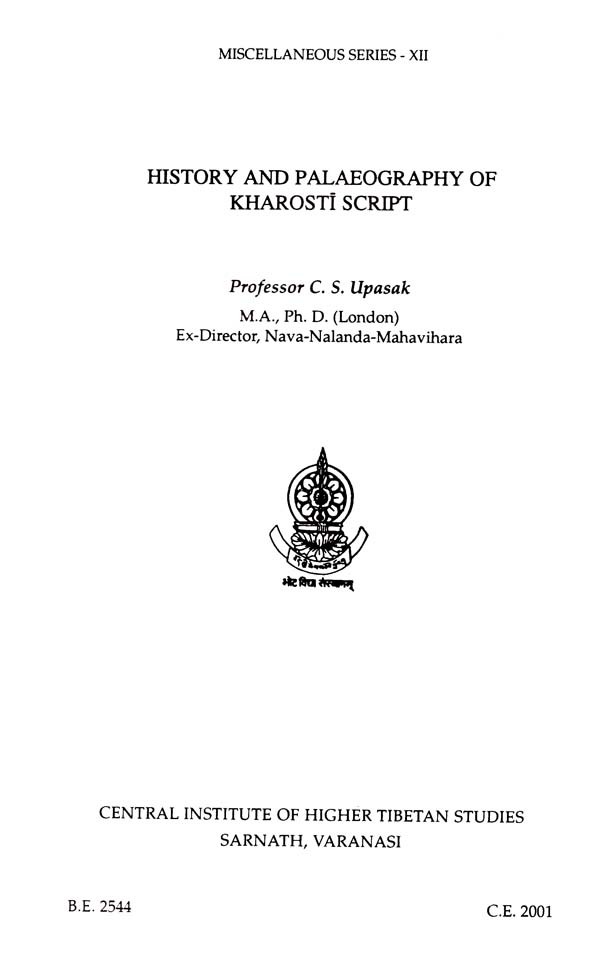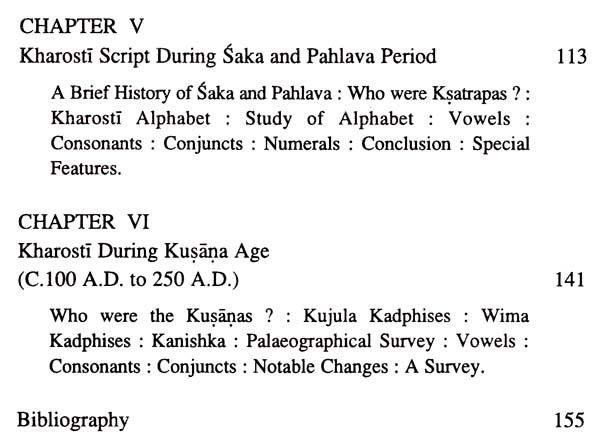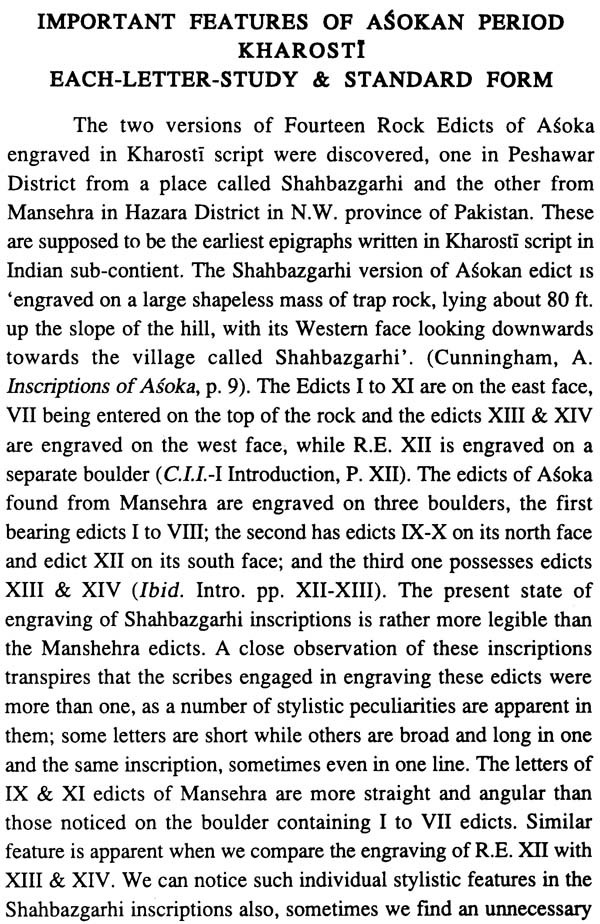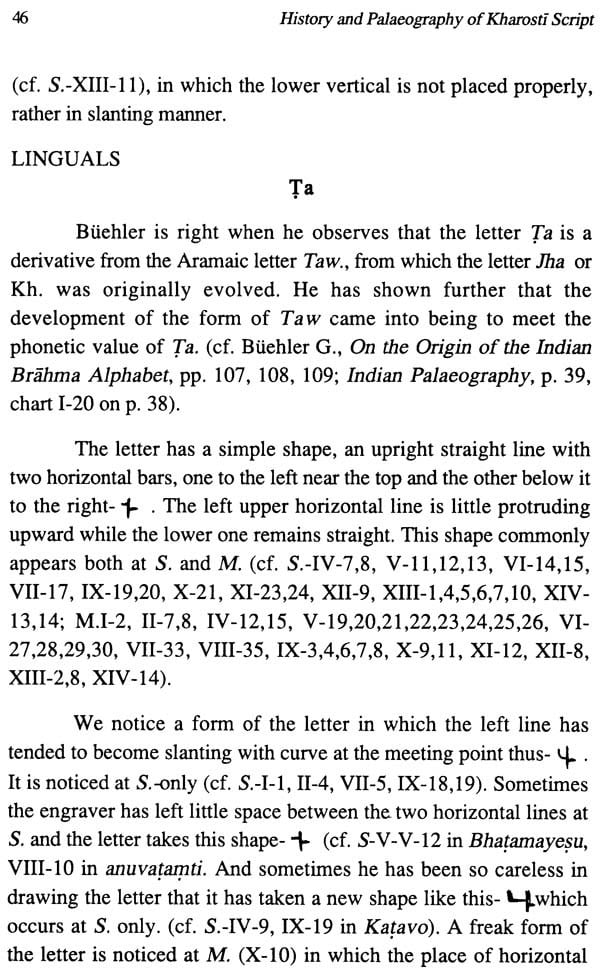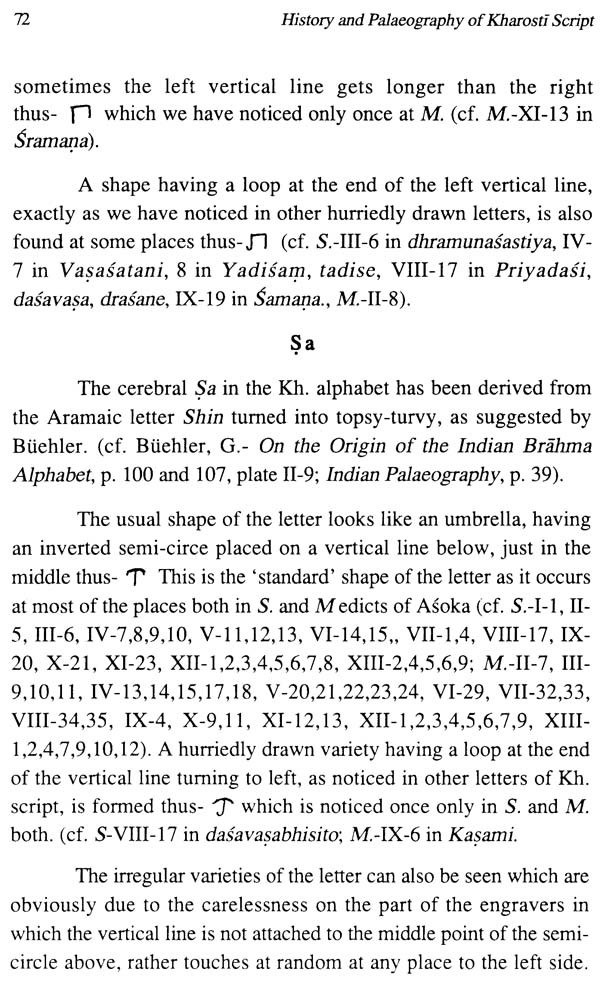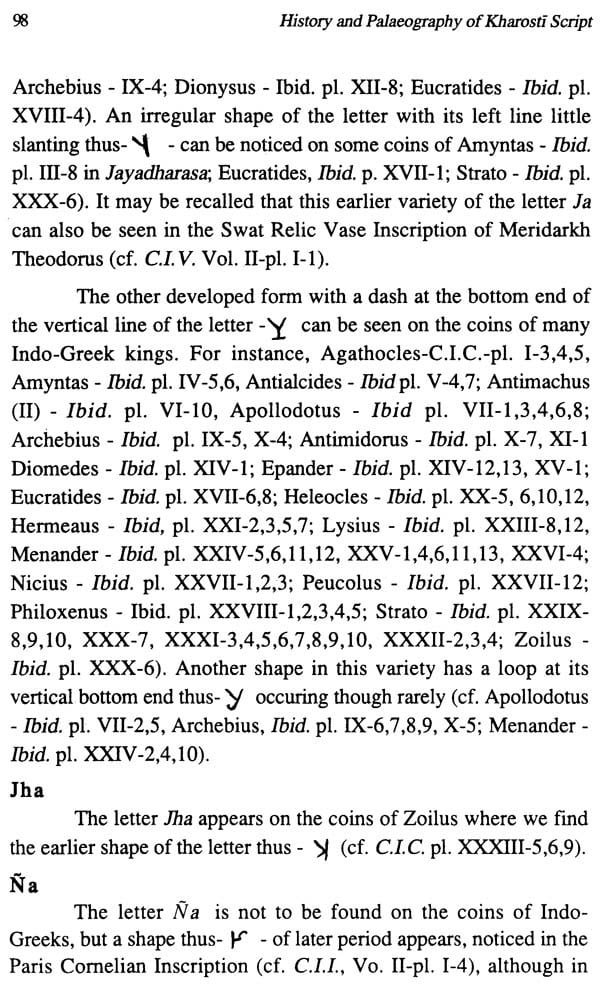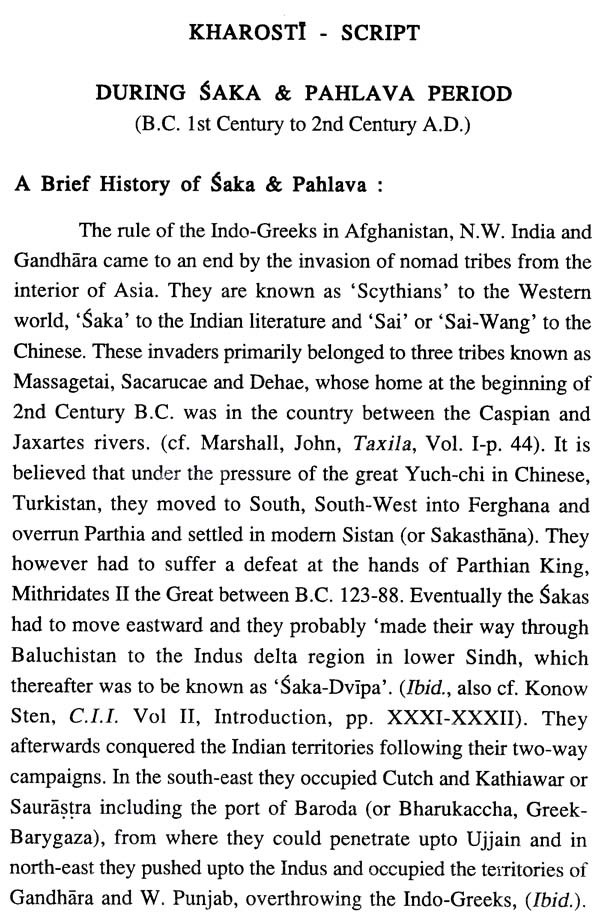
History and Palaeography of Kharosti Script
Book Specification
| Item Code: | UAP179 |
| Author: | C. S. Upasak |
| Publisher: | Central Institute Of Higher Tibetan Studies Sarnath, Varanasi |
| Language: | English |
| Edition: | 2001 |
| ISBN: | 8187127090 |
| Pages: | 176 |
| Cover: | PAPERBACK |
| Other Details | 9.50 X 6.00 inch |
| Weight | 290 gm |
Book Description
Compared to Brahmi, Kharosti script had much limited vogue in terms of both time and space. It was an improvised script which remained confined to the Northwest and was structurally suited for writing only Prakrit. As against that Brahmi is the indigenous script of India which is suitable for Prakrit as well as Sanskrit and is the mother of not only all regional scripts of India but also those of most South-Asian countries. Epigraphs in Brähmi and the scripts derived therefrom are, therefore, much more numerous and relevant for Indian studies and research and continue to claim overwhelming attention from Indologists particularly in India. Correspondingly the number of Indian scholars who can read and interpret Kharosti is fast declining since the amalgamation of the North-West region in Pakistan. It is therefore not a little heartening to note that Dr C.S. Upasak who is well known for his book History & Palaeography of Mauryan Brahmi Script has now delved into the mysteries of the Origin and Development of the Kharosti Script.
Being one of the seniormost scholars of Indian Palacography and Buddhist Studies Dr Upasak is best equipped to undertake researches into the development of Kharosti as the favourite vehicle of numerous Buddhist endowments and relic inscriptions in the North-West following the lead of Aśoka who engraved his Rock edicts at Shahbazgarhi and Manshehra in Gandhära in this script. After establishing the Standard form of the alphabets in the Asokan inscriptions, the learned author has traced their modifications during the Indo-Parthian period and noted their special notations and developed forms in the Kusäna age. The chronology that he has thus established is quite scientific and convincing.
Although some seals and sealings recovered from the sites of Indus Valley Civilization bear some sort of writing on them, to our utter disappointment, the writing on them have not yet been convincingly read albeit brilliant efforts which are still on. There exist two other ancient scripts of India, namely, Brähmi and Kharosti, which are well known to us. They appear for the first time in the edicts of Asoka. The Brähmi being indigenous script is the mother of all the scripts of India throughout the ages, rather the scripts of Sri Lanka, Burma, Thailand, Cambodia and Tibet also sprouted from this very script. The other script, Kharosti is derived from a foreign script, the Aramaic and was usually current in the North-West region of the Indian sub-continent and that also mostly among the Buddhist community. It is interesting to find that almost all the written materials found in this script are Buddhist in nature and are in local Prakrits. Moreover being an improvised script it was not suited to Sanskrit phonetics and eventually no Sanskrit document written in this script could be found. As against Brähmi, this script could not live long and died a natural death after five or six centuries and became obsolete after 4th century A.D.
Unlike Brähmi, the Kharosti had limited dimensions and was used for specific purposes and that also mainly by the Buddhists in certain regions. This charecteristic feature of the script did not allow much scope for its natural growth and development during the succeeding ages as we see in the case of Brähmi. Yet age-wise developments are clearly noticed in its letters in successive periods during its currency.
The art of writing in India can be traced back to the period of Indus Valley Civilization when we find some sort of writing appearing on a number of seals and sealings recovered from Harappa, Mohen-jo-daro in Pakistan and sites like Lothal and Kalibanga etc. in India. Despite many brilliant efforts to decipher this script and read the legends on those seals, we have not yet been able to know what is written on them definitely; while efforts are still on by many scholars to solve this tangle.
No doubt the art of writing was known to Indians during the Buddha's era in the 6th century B.C. It may be worth mentioning that the Words of the Buddha' were collected in a synod usually known as 'First Buddhist Council' at Rajagaha (Skt. Rajagriha) by his 500 close disciples soon after his Mahāparinibbāna. The 'Words of the Buddha' were edited, compiled and sorted out in 'Three Baskets (Pitakas). Known as 'Tripitaka' which comprises the Vinayapitaka, Suttapitaka and Abhidhammapitaka. The word 'Pitaka' or 'basket' is of some significance in this context as it presupposes to mean that these 'baskets' were for the purpose 'to contain something' and that something was nothing other than the written document or manuscript. It may be recalled that references to the Nikayas of Tripitaka occur in the Bharhut and Sanchi inscriptions of about 1st century B.C. for the first time. We may also allude to one epigraph on the relic casket discovered from Piprahawa, which is the earliest known written object in Brähmi script, and which probably belongs to c. 6th century B.C. as it refers to the deposit of the corporeal remains of the Buddha by the Skys Sukirti and his brothers, sisters and relatives¹. This Brahmi epigraph was engraved probably soon after the demise of the Buddha as it is also evident by the archaic language used in it. The edicts of Asoka are however regarded as the earliest epigraphs discovered in India. They are found from many places of Indian sub-continent, both north and south and also in Afghanistan and are written in four scripts and in three languages; those found in India proper are in Brahmi script using local prakrit language while his two Fourteen Rock Edicts discovered from Shahbazgarhi and Manshehra near Peshawar in Pakistan are written in Kharosti script, the language being local Präkrit. One fragmentary inscription of Asoka recovered from Taxila is written in Aramaic script and language. As many as five inscriptions of Asoka are discovered from Afghanistan. Two of his edicts are engraved on a boulder at Kandahar, one in Greek script and language and the other in Aramaic script and language. The other three epigraphs found from Jalalabad and Kandahar are fragmentary and written in Aramaic script and language. It is interesting to note that in the Minor Rock Edicts of Asoka recovered from Brahmagiri, Siddapur and Jating Rameshwar in South India a word 'lipikarena' is inscribed in Kharosti script just after the name of the scribe 'Capada' written in Brahmi, who as his name suggests, hailed from Iran or somewhere in N.W. India or Afghanistan.
**Contents and Sample Pages**
